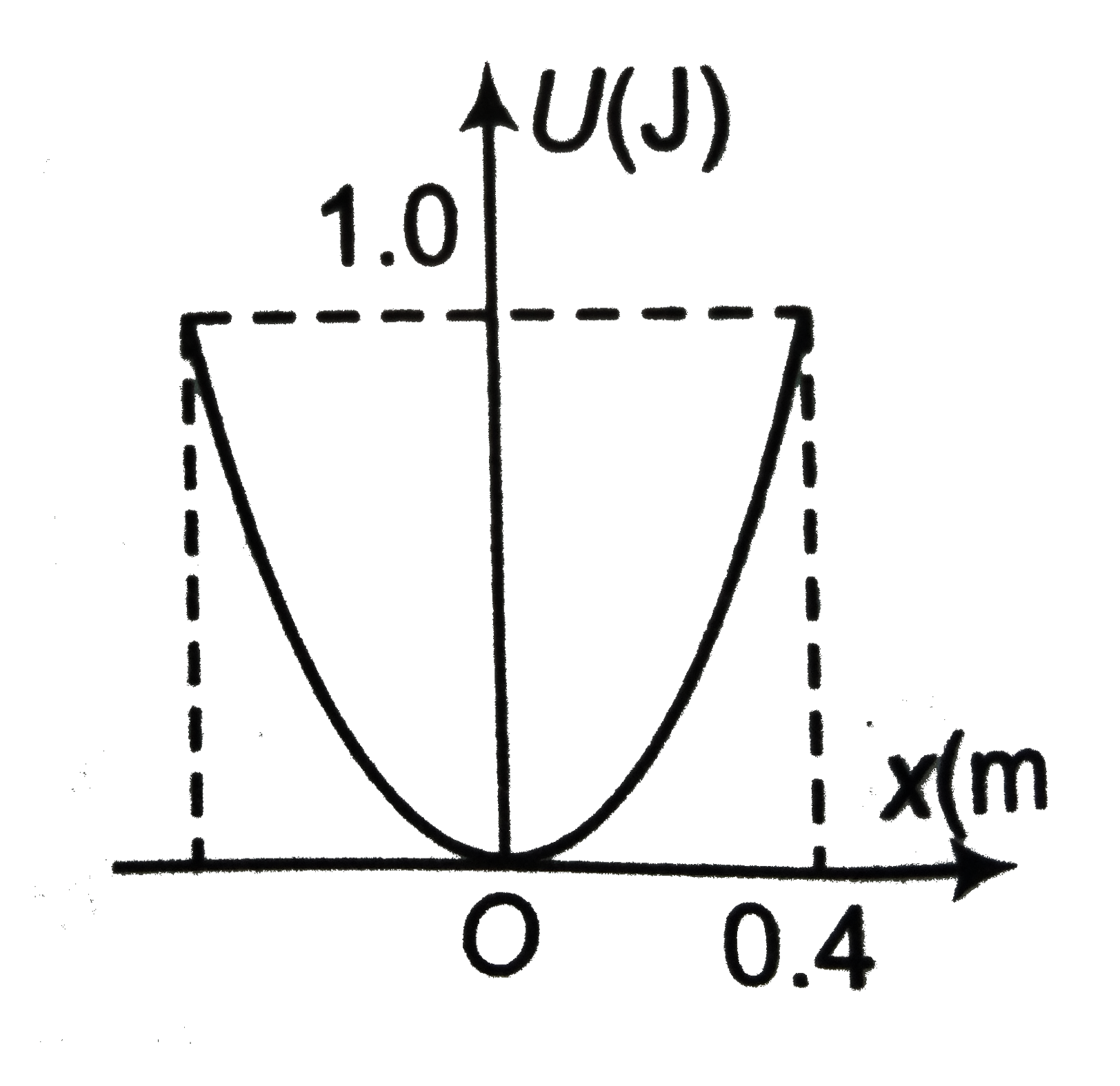When a particle oscillates in simple harmonic motion, both in potential energy and kinetic energy vary sinusoidally with time. If v be the frequency of the motion of the particle, the frequency associated with the kinetic energy is :
4v
2v
v is highest when the spring comes back to natural position
v2
The correct Answer is:B
To solve the problem, we need to analyze the relationship between the motion of a particle in simple harmonic motion (SHM) and the variations in its kinetic energy (KE) and potential energy (PE).
1. Understanding Simple Harmonic Motion (SHM):
- In SHM, a particle oscillates about a mean position. The motion can be described by a sinusoidal function.
- The displacement of the particle from the mean position can be expressed as:
x(t)=Asin(ωt+ϕ)
where A is the amplitude, ω is the angular frequency, and ϕ is the phase constant.
2. Kinetic Energy (KE) in SHM:
- The kinetic energy of the particle is given by:
KE=12mv2
- The velocity v can be derived from the displacement:
v(t)=dxdt=Aωcos(ωt+ϕ)
- Substituting v(t) into the kinetic energy formula:
KE=12m(Aωcos(ωt+ϕ))2=12mA2ω2cos2(ωt+ϕ)
3. Potential Energy (PE) in SHM:
- The potential energy is given by:
PE=12kx2
- Using Hooke's law, where k is the spring constant, we can express it in terms of displacement:
PE=12k(Asin(ωt+ϕ))2=12kA2sin2(ωt+ϕ)
4. Frequency of Kinetic Energy:
- The kinetic energy varies as cos2(ωt+ϕ). The function cos2 can be expressed using the double angle identity:
cos2(θ)=1+cos(2θ)2
- Therefore, the kinetic energy can be rewritten as:
KE=14mA2ω2+12mA2ω2cos(2(ωt+ϕ))
- This shows that the kinetic energy oscillates with a frequency of 2ω.
5. Relating Angular Frequency to Frequency:
- The frequency v is related to the angular frequency ω by:
ω=2πv
- Thus, the frequency associated with kinetic energy becomes:
Frequency of KE=2v
Final Answer:
The frequency associated with the kinetic energy is 2v.
- In SHM, a particle oscillates about a mean position. The motion can be described by a sinusoidal function.
- The displacement of the particle from the mean position can be expressed as:
x(t)=Asin(ωt+ϕ)
where A is the amplitude, ω is the angular frequency, and ϕ is the phase constant.
- The kinetic energy of the particle is given by:
KE=12mv2
- The velocity v can be derived from the displacement:
v(t)=dxdt=Aωcos(ωt+ϕ)
- Substituting v(t) into the kinetic energy formula:
KE=12m(Aωcos(ωt+ϕ))2=12mA2ω2cos2(ωt+ϕ)
- The potential energy is given by:
PE=12kx2
- Using Hooke's law, where k is the spring constant, we can express it in terms of displacement:
PE=12k(Asin(ωt+ϕ))2=12kA2sin2(ωt+ϕ)
- The kinetic energy varies as cos2(ωt+ϕ). The function cos2 can be expressed using the double angle identity:
cos2(θ)=1+cos(2θ)2
- Therefore, the kinetic energy can be rewritten as:
KE=14mA2ω2+12mA2ω2cos(2(ωt+ϕ))
- This shows that the kinetic energy oscillates with a frequency of 2ω.
- The frequency v is related to the angular frequency ω by:
ω=2πv
- Thus, the frequency associated with kinetic energy becomes:
Frequency of KE=2v
The frequency associated with the kinetic energy is 2v.
Topper's Solved these Questions
- DAILY PRACTICE PROBLEMSBOOK - RESONANCE ENGLISHCHAPTER - DAILY PRACTICE PROBLEMSEXERCISE - dpp 88
7 Videos
- DAILY PRACTICE PROBLEMSBOOK - RESONANCE ENGLISHCHAPTER - DAILY PRACTICE PROBLEMSEXERCISE - Now answer the following :
20 Videos
- DAILY PRACTICE PROBLEMSBOOK - RESONANCE ENGLISHCHAPTER - DAILY PRACTICE PROBLEMSEXERCISE - dpp 86
6 Videos
- CURRENT ELECTRICITYBOOK - RESONANCE ENGLISHCHAPTER - CURRENT ELECTRICITYEXERCISE - Exercise
53 Videos
- ELASTICITY AND VISCOCITYBOOK - RESONANCE ENGLISHCHAPTER - ELASTICITY AND VISCOCITYEXERCISE - Advanced Level Problems
9 Videos
Similar Questions
Knowledge Check
A particle is executing simple harmonic motion. Its total energy is proportional to its
Adisplacement from equilibrium positionBfrequency of oscillationCsquare of amplitude of motionDvelocity at equilibrium positionA particle executing simple harmonic motion with time period T. the time period with which its kinetic energy oscillates is
ATB2TC4TDT2
The potential energy of a particle executing SHM varies sinusoidally with frequency f. The frequency of oscillation of the particle will be
View SolutionMolecules in motion possess energy called kinetic energy.
View SolutionA particle of mass 2kg moves in simple harmonic motion and its potential energy U varies with position x as shown. The period of oscillation of the particle is

View SolutionA particle of mass 2kg moves in simple harmonic motion and its potential energy U varies with position x as shown. The period of oscillation of the particle is

View SolutionIf the frequency of the acceleration of a simple harmonic oscillator if f_0 then the frequency of the potwntial energy is
View SolutionWhen a particle executes SHM oscillates with a frequency v, then the kinetic energy of the particle
View Solution